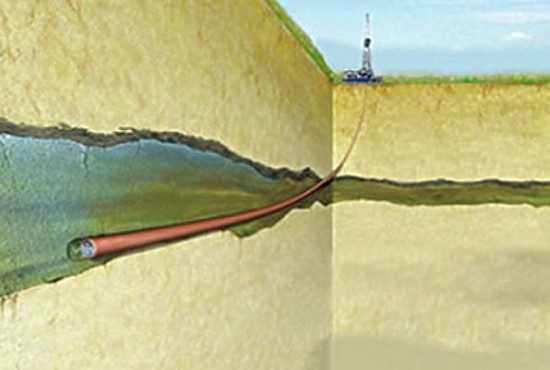Not to be confused with the outer space race of the 1960s, the pore space race looks downward. By definition, pore space refers to an underground void porous enough to allow water or gas to flow into it. This is prime underground real estate being sought by the energy industry and raw materials manufacturers. Along with governments around the world, polluting industries recognize that to achieve the 2015 Paris Climate Agreement goal of keeping mean atmospheric warming from heating up to no more than 1.5 Celsius (2.7 Fahrenheit), they need a place to sequester the pollutants or stop what they do.
Carbon Capture and Sequestration (CCS) is the technical fix. Proven CCS projects (Carbon Brief lists 22 at present) are few and far between at present. One of the reasons is safe, secure underground storage. Currently working CCS projects are pumping captured carbon dioxide (CO2) into depleted oil and gas reservoirs, sandstone and salt formations. The advantage of storing the CO2 in depleted oil and gas reservoirs is the proven retention that the site provides. After all, these are voids that harboured millions to billions of barrels of oil and equivalent natural gas volumes for hundreds of millions of years without significant leaks to the surface. There is no guarantee, however, that these depleted oil or gas reservoirs remain suitable after the hydrocarbons have been removed. So even these need to be assessed for suitability.
Underground sedimentary sandstone rock formations represent the best pore space. These large underground sedimentary formations feature an impermeable layer of rock above that serves as a bottle cap to keep the stored CO2 from leaking out. In sandstone, introduced CO2 combines with it to turn into limestone. The time scale for mineralization for this to occur could be hundreds to thousands of years. But before then, the bottle cap has to hold.
Underground saline sedimentary formations contain large amounts of water and are considered among the best pore spaces available. Their drawbacks are that sealed containment may not be as reliable as sandstone formations over-capped by impermeable rock. Their advantages, however, are their wide availability and large storage capacity.
Besides the race to find suitable pore spaces, the question of ownership looks to land rights laws. In the United States, ownership of pore space would be determined by who owns the land above it. That means, in seeking suitable pore spaces to implement CCS, surface owners need to be compensated. But in some cases, the person on the surface may have sold the mineral rights under the land. But do mineral rights cover pore space? Usually not, because pore space is geological and not mineral. This means we are dealing with emerging new ownership and rights laws in the U.S. and elsewhere.
In Western Canada, the government of Alberta after receiving 40 applications from companies announced 19 new pore space sites and projects. The accepted applications are from companies part of the Pathways Alliance, a group of oil sands producers who are committed to the target of net-zero emissions by 2050. Among them are Canadian Natural Resources Ltd., Cenovus Energy Inc., ConocoPhillips, Imperial Oil Ltd., MEG Energy Corp. and Suncor Energy Inc.
Kendall Dilling, President of the Pathways Alliance talked about their proposed carbon capture and storage hub with engineering work already underway. In an article appearing in The Globe and Mail, Dilling states, “With continued collaboration with both the provincial and federal governments on a fiscal and regulatory framework that supports a practical and realistic approach to emissions reduction, Pathways Alliance companies could begin safely injecting and storing captured CO2 from several oil sands facilities by late 2026.”
In the United States, the Inflation Reduction Act signed into law in August offers large tax credits of between $50 and $180 per metric ton for CCS projects. Project thresholds have been lowered, to begin with as little as 1,000 metric tons of captured CO2. And local governments and individuals can claim tax credits as cash for any projects they start. That should heat up the pore space race in America.
















